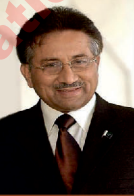
Parvez Musharraf’s
The period from 1999 to 2008, under the leadership of General Pervez Musharraf, was a significant phase in Pakistan’s history, marked by dramatic political events, economic reforms, and shifting international alliances. This article delves into the key events, challenges, and transformations that defined Pervez Musharraf’s government during this era.
The Military Coup and Assumption of Power
General Pervez Musharraf assumed power on October 12, 1999, following a military coup that ousted Prime Minister Nawaz Sharif’s government. This event marked the fourth military coup in Pakistan’s history and marked the beginning of a new era in Pakistani politics.
Musharraf’s government initially portrayed itself as a reformist regime, promising to address issues such as corruption, political instability, and economic mismanagement that had plagued the country. He assumed the dual roles of Chief Executive and Chief Martial Law Administrator, effectively sidelining elected civilian institutions.
Economic Reforms and Liberalization
One of the defining features of Musharraf’s government was its commitment to economic reforms and liberalization. The government implemented a series of measures aimed at stabilizing the economy, attracting foreign investment, and reducing poverty. These policies included the privatization of state-owned enterprises, fiscal discipline, and attracting foreign direct investment.
The telecom and banking sectors saw significant liberalization during this period, leading to greater competition and innovation. Pakistan’s economy experienced substantial growth, and the country became a more attractive destination for foreign investors.
The War on Terror and International Relations
The 9/11 attacks in the United States in 2001 had profound implications for Pakistan’s foreign policy and domestic stability. Musharraf’s government chose to align with the United States in the global “War on Terror” against Al-Qaeda and the Taliban. This decision was not without controversy, as it led to internal strife, including militancy and sectarian violence within Pakistan.
The government’s support for the U.S.-led coalition in Afghanistan resulted in Pakistan becoming a pivotal ally in the fight against terrorism. However, it also strained Pakistan’s relations with Afghanistan and raised concerns about sovereignty violations due to U.S. drone strikes in Pakistani territory.
Political Controversies and Opposition
Pervez Musharraf’s government faced political controversies and opposition throughout its tenure. Protests, legal battles, and allegations of human rights abuses marred his regime. His decision to hold onto the post of Army Chief while serving as the President drew criticism, further fueling political discontent.
In 2007, Musharraf imposed a state of emergency, suspended the constitution, and dismissed the judiciary. This move led to nationwide protests and a tense political environment, ultimately forcing him to resign from the presidency in August 2008.
Conclusion
Pervez Musharraf’s government from 1999 to 2008 was a period of significant political transformation and economic reform in Pakistan. His decision to align with the United States in the War on Terror had profound implications for the region and Pakistan’s internal stability.
Despite economic growth and reform efforts, his tenure was marked by political controversies, allegations of human rights abuses, and the imposition of emergency rule. The end of his government in 2008 marked a return to civilian rule in Pakistan and underscored the complexities of governance and power dynamics in the country’s political landscape. Musharraf’s legacy continues to be a subject of debate and scrutiny in Pakistan and beyond.

